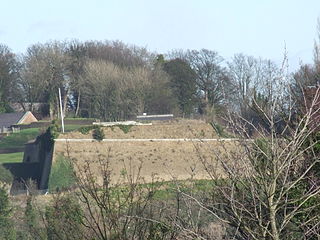 W
WFort Amherst, in Medway, South East England, was constructed in 1756 at the southern end of the Brompton lines of defence to protect the southeastern approaches to Chatham Dockyard and the River Medway against a French invasion. Fort Amherst is now open as a visitor attraction throughout the year with tours provided through the tunnel complex.
 W
WFort Clarence is a now defunct fortification that was located in Rochester, Kent, England.
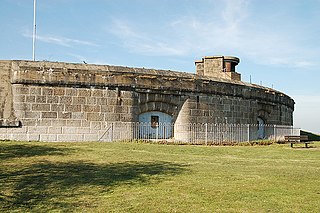 W
WCoalhouse Fort is an artillery fort in the eastern English county of Essex. It was built in the 1860s to guard the lower Thames from seaborne attack. It stands at Coalhouse Point on the north bank of the river, at a location near East Tilbury which was vulnerable to raiders and invaders. It was the last in a series of fortifications dating back to the 15th century and was the direct successor to a smaller mid-19th century fort built on the same site. Constructed during a period of tension with France, its location on marshy ground caused problems from the start and led to a lengthy construction process. The fort was equipped with a variety of large-calibre artillery guns and the most modern defensive facilities of the time, including shell-proof casemates protected by granite facing and cast-iron shields. Its lengthy construction and the rapid pace of artillery development at the time meant that it was practically obsolete for its original purpose within a few years of its completion.
 W
WFort Cumberland is a pentagonal artillery fortification erected to guard the entrance to Langstone Harbour, east of the Dockyard of Portsmouth on the south coast of England. It was sited to protect the Royal Navy Dockyard, by preventing enemy forces from landing in Langstone Harbour and attacking from the landward side. Fort Cumberland is widely recognised as the finest example of a bastion trace fort in England. It is a scheduled monument and a Grade II* listed building
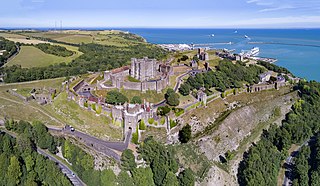 W
WDover Castle is a medieval castle in Dover, Kent, England. It was founded in the 11th century and has been described as the "Key to England" due to its defensive significance throughout history. Some sources say it is the largest castle in England, a title also claimed by Windsor Castle.
 W
WThe Western Heights of Dover are one of the most impressive fortifications in Britain. They comprise a series of forts, strong points and ditches, designed to protect the country from invasion. They were created in the 18th and 19th centuries to augment the existing defences and protect the key port of Dover from both seaward and landward attack; by the start of the 20th century Dover Western Heights was collectively reputed to be the 'strongest and most elaborate' fortification in the country. The Army finally withdrew from the Heights in 1956-61; they are now a local nature reserve.
 W
WDymchurch Grand Redoubt is a fortification at Palmarsh on the coast of Kent in England, built during the Napoleonic War as part of a large defensive scheme to protect the country from an expected French invasion.
 W
WEastbourne Redoubt is a circular coastal defence fort at Eastbourne, East Sussex, on the south coast of England. It was built in 1805 as part of the British anti-invasion preparations during the Napoleonic Wars. Visitors to the Redoubt can now explore the fortress, discovering the stories of the people who lived there throughout its 200-year history.
 W
WHarwich Redoubt is a circular fort built in 1808 to defend the port of Harwich, Essex from Napoleonic invasion. The Harwich Society opens it to the public.
 W
WJaywick Martello Tower is a renovated Martello tower at Jaywick, 2.7 miles (4.3 km) south-west of Clacton-on-Sea, Essex. It now functions as an arts, heritage and community venue.
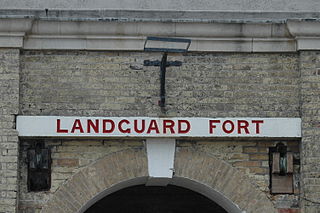 W
WLandguard Fort is a fort at the mouth of the River Orwell outside Felixstowe, Suffolk, designed to guard the entrance to the port of Harwich. It is now open to the public.
 W
WLittlehampton Redoubt, usually known as Littlehampton Fort, was built in 1854 to protect the entrance to the River Arun at Littlehampton on the south coast of England, against possible attack by the French under the Emperor Napoleon III. There had been a previous battery on the east bank of the river, but the new fort was built on the west bank. It consisted of a platform from which cannon could sweep the harbour mouth, with a barracks behind and a surrounding defensive ditch and wall. The fort was an innovative military structure, incorporating the new feature of a Carnot wall. Its active use as a fort was short at only about 20 years, owing to technical changes in armaments, but it was a precursor of the later Palmerston Forts and therefore is NOT the First Palmerston Fort as has been alleged. The Palmerston Forts were built after the 1860 commission. Littlehampton Fort is now in a ruinous and overgrown state but largely protected by the Ivy that now grows over the walls.
 W
WNew Tavern Fort is an historic artillery fort in Gravesend, Kent. Dating mostly from the 18th and 19th centuries, it is an unusually well-preserved example of an 18th-century fortification and remained in use for defensive purposes until the Second World War. It was built during the American War of Independence to guard the Thames against French and Spanish raiders operating in support of the newly formed United States of America. It was redesigned and rebuilt in the mid-19th century to defend against a new generation of iron-clad French warships.
 W
WFort Pitt is a Napoleonic era fort on the high ground of the boundary between Chatham and Rochester, Kent. A fort on the site was proposed in the 1790s, and finally built between 1805 and 1819. Not finally used as a fort, it became a hospital and is now a girls' grammar school.
 W
WThe Seaford Museum and Heritage Society established its museum of local history at the Martello Tower in 1979. It contains objects, archives and displays relating to the history of the local area.
 W
WShorncliffe Redoubt is a British Napoleonic earthwork fort. The site is approximately 300 feet by 300 feet and is situated on the Kentish Coast in Sandgate, Kent.
 W
WShotley Battery was built in 1865 on the Shotley Peninsula to guard the port of Felixstowe, within HMS Ganges Naval Training school, on the same site as an existing Martello Tower.
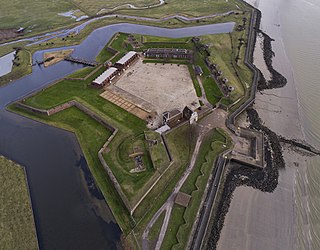 W
WTilbury Fort, also known historically as the Thermitage Bulwark and the West Tilbury Blockhouse, is an artillery fort on the north bank of the River Thames in England. The earliest version of the fort, comprising a small blockhouse with artillery covering the river, was constructed by King Henry VIII to protect London against attack from France as part of his Device programme. It was reinforced during the 1588 Spanish Armada invasion scare, after which it was reinforced with earthwork bastion, and Parliamentary forces used it to help secure the capital during the English Civil War of the 1640s. Following naval raids during the Anglo-Dutch Wars, the fort was enlarged by Sir Bernard de Gomme from 1670 onwards to form a star-shaped defensive work, with angular bastions, water-filled moats and two lines of guns facing onto the river.